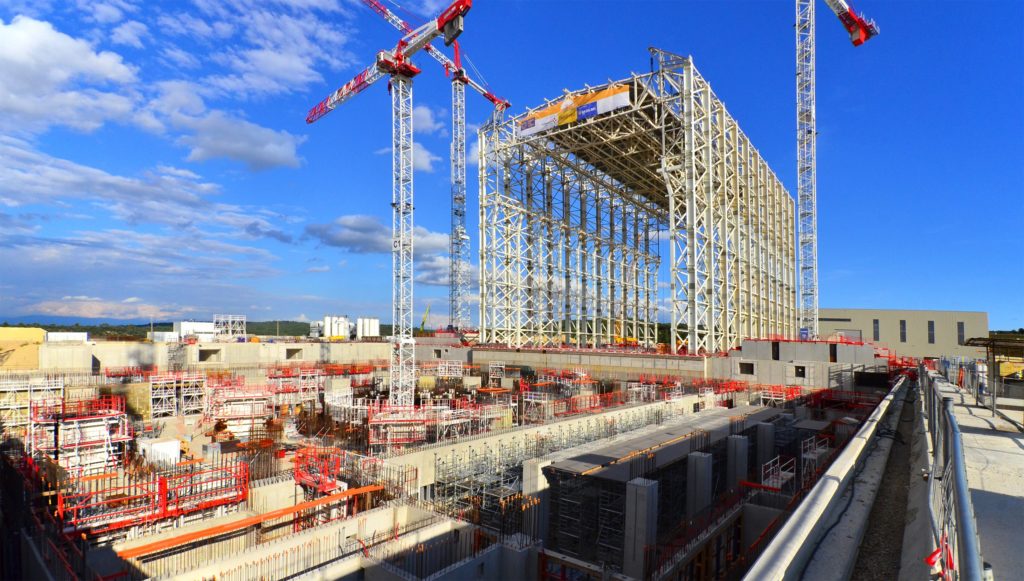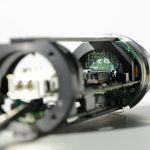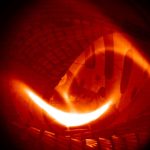Fusion energy production is an old dream of mankind, the developments of a fusion power plant have been long underway. Countries including more than half of the world population have joined to create ITER, the biggest research project on Earth. The members are China, the EU, India, Japan, South-Korea, Russia, the USA.
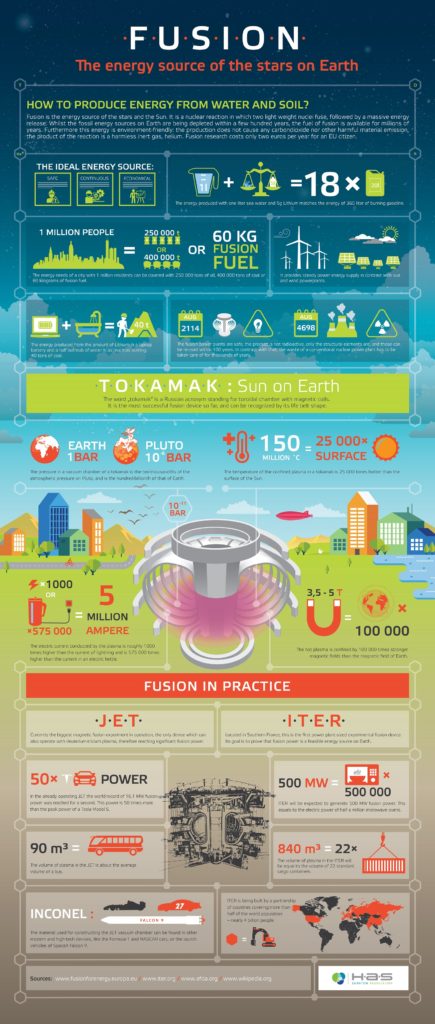
Fusion infographics, source: Wigner fusion
Download from here.
Fusion is a nuclear reaction in which two light nuclei fuse, the closest natural fusion power plant is the Sun. The Sun creates huge amount of energy with fusion, which energy feeds the life on Earth. When we look at the sky at night, we can see thousands of fusion reactors, because all of the stars in the Universe are powered by fusion. Despite of the numerous working examples and the research, ongoing for decades, a fusion power plant with positive energy balance is still to be implemented. In practice we wanted to bring down the Sun to Earth which is not an easy task but it offers a safe, inexhaustible and environmentally friendly energy source.
The types of fusion reactions those dominate Suns energy production is different from that can be utilized economically on Earth. In the Sun there are two parallel energy production cycle which produces fusion energy. One is the proton-proton cycle (PP) and the other one is the Carbon-Nitrogen-Oxygen cycle (CNO). On Earth the easiest way to create fusion is to fuse two hydrogen isotopes, called Deuterium and Tritium, and the end products are a helium nuclei and a neutron. Deuterium can be extracted from seawater because every 6000th water molecule contains a Deuterium instead of Hydrogen. Contrarily, tritium can only be found in traces, and it has to be produced or bred in term accordingly. This can be done by the fusion reaction produced neutron which hits a Lithium nucleus and creates Helium and Tritium. A fusion power plant would produce fuel for itself this way from Lithium which can be extracted from seawater and many type of volcanic rocks.
The difficulties of achieving fusion are due to the very high temperature, 100 million degrees Celsius – 10 times hotter than the core of the Sun – at which the D-T fusion reaction takes place most likely. At such a high temperature the matter ionizes, which means that the electrons separate from the nuclei. This is the so called plasma state or the fourth state of matter. Under terrestrial conditions high temperature plasma can be confined with very strong magnetic fields to prevent touching the device wall. About 40 magnetic confinement experimental devices operate around the world at the moment.
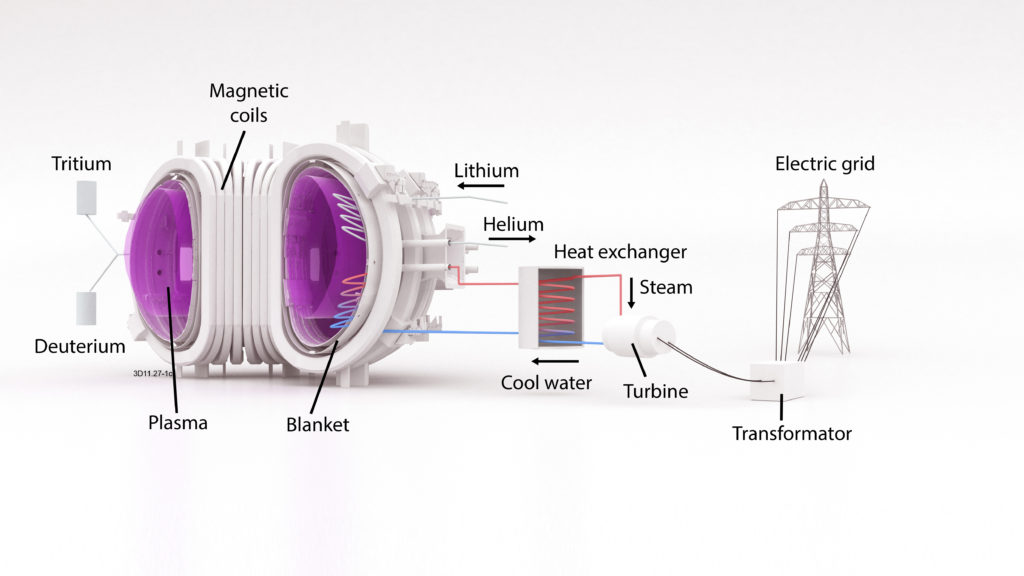
Schematic of a fusion power plant
ITER is also a magnetic confinement experimental device, its construction is a keystone in fusion research since numerous physics processes and technological solution will be able to be tested in ITER for the first time.
Among others ITER aims to produce 500MW fusion power with 50MW of heating power, with this achievement it will demonstrate that fusion is a feasible way of energy production on Earth. Tritium breeding techniques will also be tested here for the first time. This experiment will establish the concept of the first fusion power plant which will produce energy to the grid.
As a member of the European Union’s Fusion Research Programme, Wigner Research Centre for Physics and the Budapest University of Technology and Economics are contributing in ITER project. More than 10 Hungarian physicists and engineers involved in this huge project which is being built in South-France.
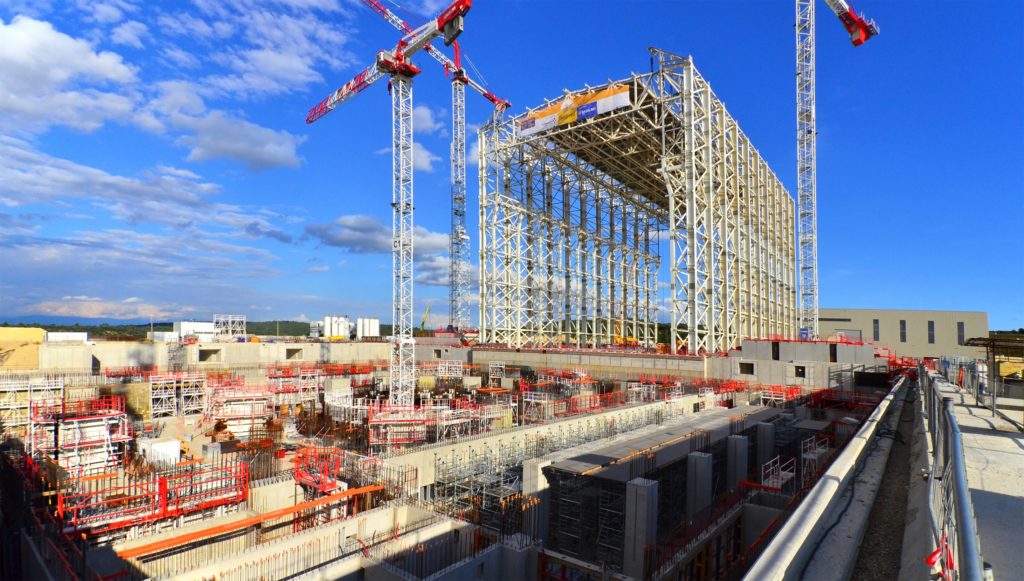
ITER worksite, September 2015, Source: iter.org
The main task of the Hungarian team is to develop components, cables, cabling looms, connectors, vacuum feedthroughs for the transmission of diagnostic signals. The parts have to meet special requirements: they have to be in operation without maintenance for 20 years and connectors have to be replaceable by remote handled robotic arms. For this task the Hungarian team recently received more than 400.000 EUR support for the next two years. Hungarian researchers are also working on two other ITER diagnostics, the charge exchange spectrometer, which will measure the fusion power of the plasma, and the bolometer tomography diagnostics which will measure the radiation of the plasma. The European Union gives considerable support for both projects.
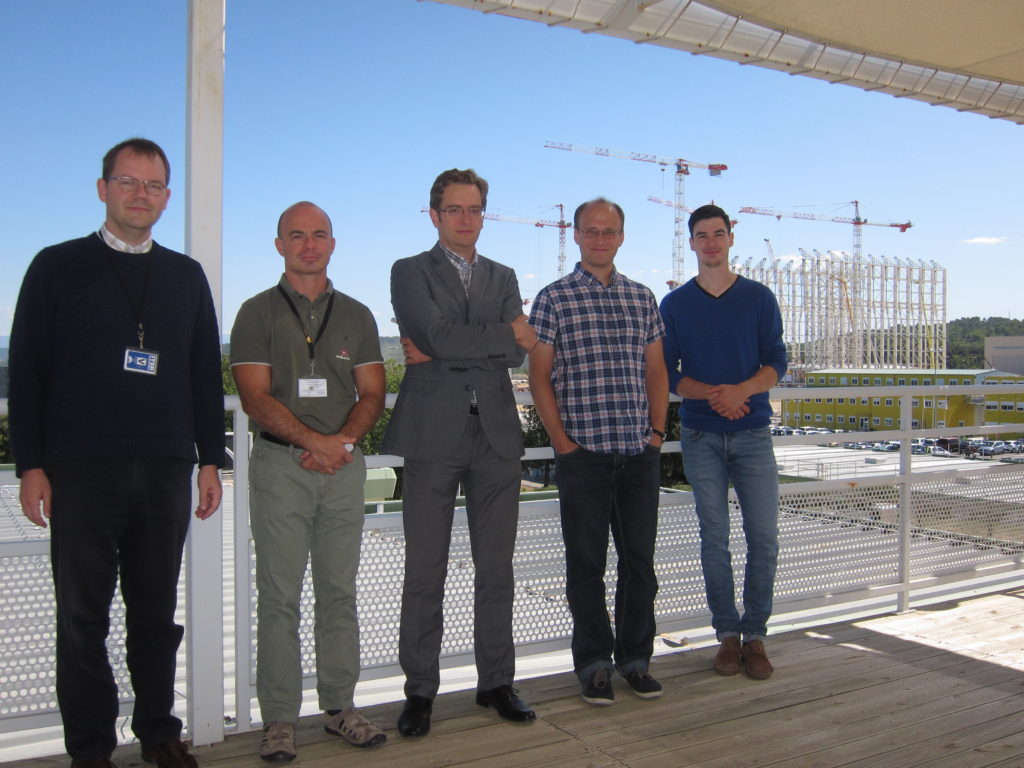
Hungarian engineers at ITER: (from left to right) Tétény Baross, Gábor Kiss, Ottó Bede, Dániel Nagy, Miklós Palánkai
At ITER, in Cadarache, South-France five Hungarian engineers are working on site. Ottó Bede, mechanical engineer shared his thoughts about how it feels like for a Hungarian engineer to work on the biggest research project in the world:
„Everyone likes to perform a task which is meaningful and has tangible results. It is an especially good feeling that from our work will benefit not only a narrow group of investors but the whole mankind. Here in Cadarache, we experience daily that colleagues join for this noble goal and overcome their political disagreement, or even decades of international tensions.”
Building ITER costs 6.6 billion Euros for the European Union, by comparison to develop the Airbus A380 airplane costs 25 billion Euros. Constructing ITER costs one Euro for an EU citizen per year. The ITER related fusion research projects are coordinated by EUROfusion Consortium in EU, getting financial support from the EU of 140 million EUR annually.
